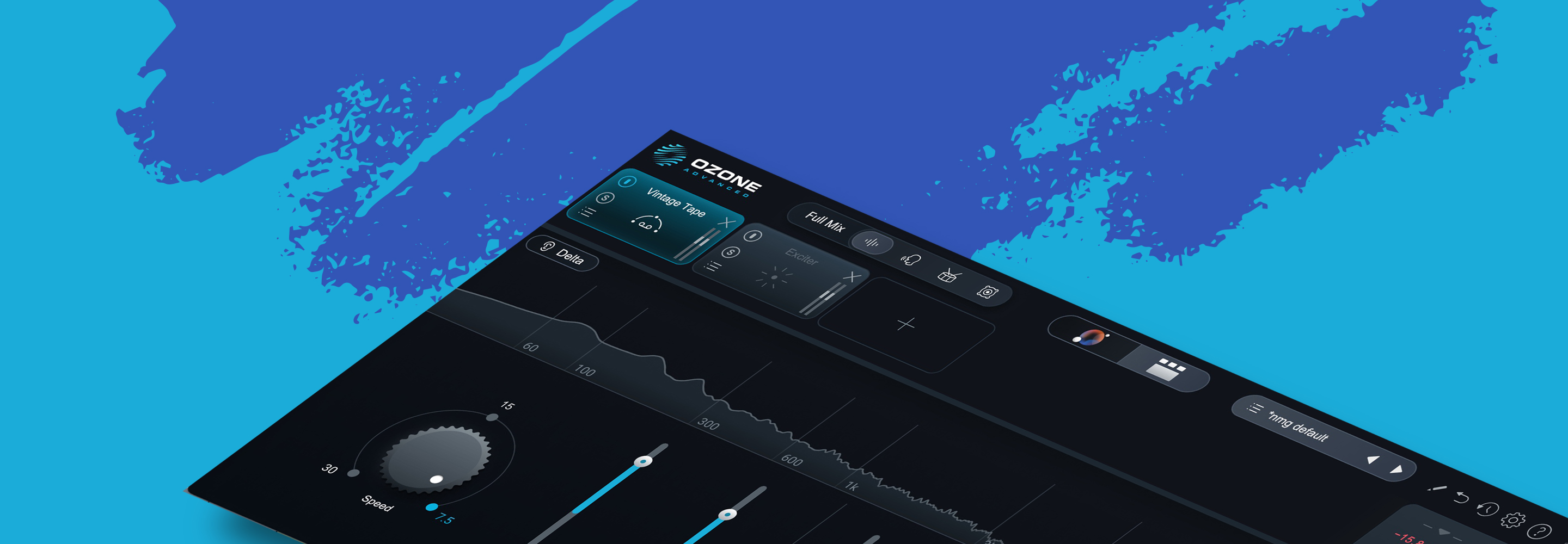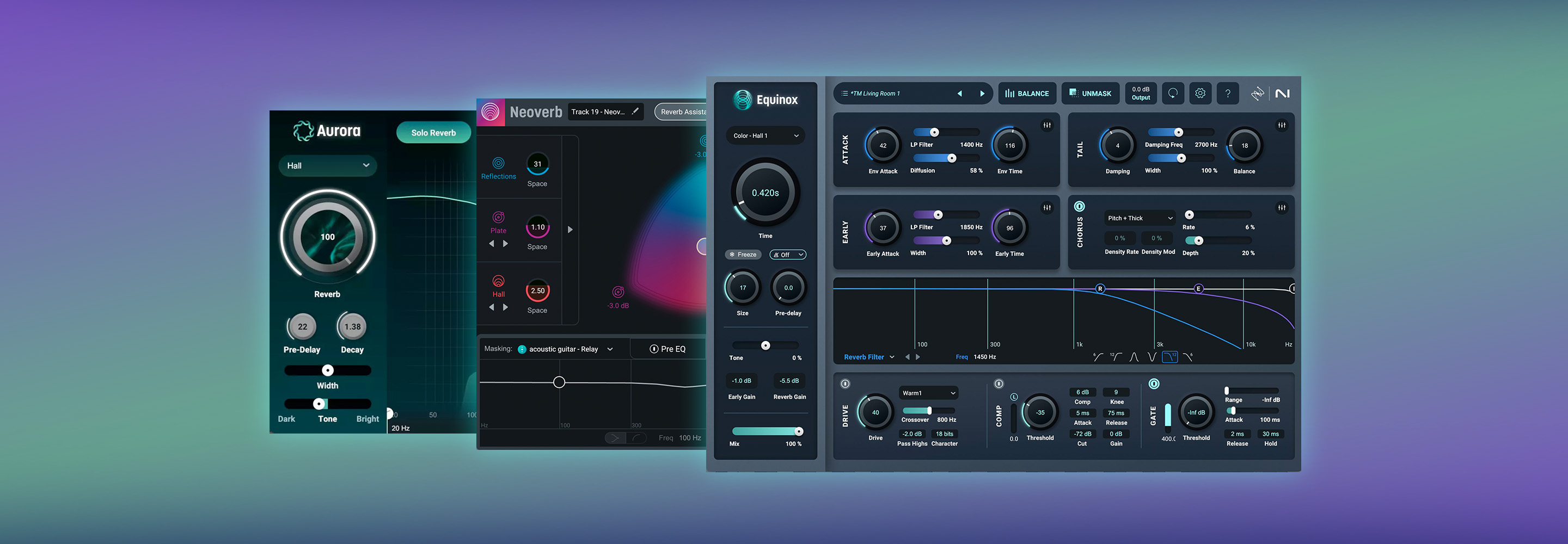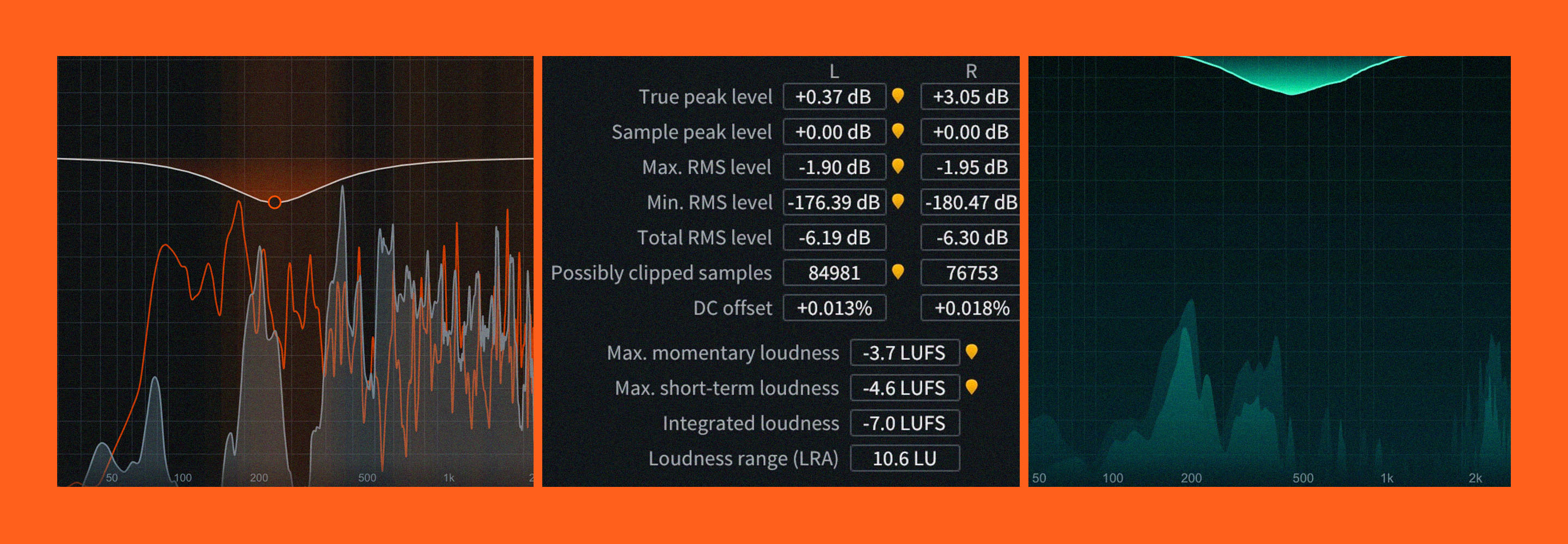
5 Songs with Great Vocal Mixes
What makes a great vocal mix? In this blog five iZotope staff members share songs with great vocal mixes.
What makes a great vocal mix? Is it the way the lead vocal interplays with the background harmonies? The microphones that are used to record the singers? How audio effects are used throughout the song?
One thing is for sure: you know a great vocal mix when you hear one, even if you’re not sure how the artists and audio engineers got there. But today, we’re exploring why vocal mixes sound so good. In this post five iZotope staff members share songs with great vocal mixes, and what makes them stand out.
1. “How Deep Is Your Love” by PJ Morton (Bee Gees cover)
Genre: R&B/Soul
Selected by: Matt Hines, Audio Multi-media Professional
This is a truly magical live album. As with all great magicians, there is a joyful appreciation for an amazing live performance, as well as the subsequent curiosity for how the ‘trick’ was pulled off. Check the visuals. There’s no trickery—just great playing by PJ Morton and cast, and first-rate work by the tracking and mixing engineers. It’s a lesson in how to track a band live, made all the more impressive in that it’s a “vocal first” listening experience, with two lead vocalists, two backing singers, and audience participation—all actively mic’d in the same room as the full band.
The band is distributed in an arc behind the lead vocals, a smart soundstage for minimizing any negative effects of bleed. When tracking, a rookie mistake is to not consider how your setup may translate well in the mix. Even when all your mics are time-aligned to minimize phase issues, you’d experience many imaging, phase, and tonal issues if, for instance, you added a trumpet player to the rear right of this room, but then hard panned the trumpet left and proximal in the final mix. The other open mics would suddenly have contradictory audible energy from the trumpet.
RX De-bleed can help. Sound Radix Auto Align is also a great tool in tandem. But, it’s better to get it right the first time. Here, instruments are mostly positioned in the mix as you see them visually in the video (the exception being isolated drums, and guitars, which probably had isolated amps).
Lastly, the technical setup is interesting to me. It appears they’re using the Neumann KMS 105 on vocals, which is renowned for high isolation yet a generous sweet spot—perfect for a vocalist who’s moving about in a room full of bleed. Note that they replicate Morton’s lead vocal setup twice, because he often switches between rhodes and grand piano, including in this song, and his lead vocal has to remain consistent. All in all, good result. I love the backing vocals at the very end of the tune.
2. “Nothing More To Say” by The Frightnrs
Genre: Reggae
Selected by: Jack Tarricone, QA Engineer
Produced by: Victor Axelrod | Mixed by: Victor Axelrod | Mastered by: Golden Mastering
The Frightnrs 2016 release of their debut album Nothing More To Say was bittersweet. Just months before it landed, lead singer Dan Klein lost his battle with ALS. The outpouring of soul into his last work is incredible. Klein put it all on the table, and producer Victor Axelrod aka “Ticklah” captured his iconic sound perfectly.
I chose the title track “Nothing More To Say” to highlight great vocal production. Instead of pristine clarity, the desperate resounding of the messy vocals defines the mood. When Klein hits the upper reaches, delay blossoms around his voice in a really nice way. The compressor on the vocals has a long delay time. You hear this in the way Klein’s voice seems to melt into the background at the end of each line.
The background vocals can’t be overlooked. The distant harmonies do so much for the classic sound. I had the chance to ask Axelrod what he did with the vocal production on this album. He said, “some kind of combination of different spring reverbs and tape delay” is what produced this comfortable music.
The artists and producers of Daptone Records are titans of soul, reggae, blues, and the rest of that beautiful spectrum. The Frightnrs represent authentic rocksteady, and the production on Nothing More To Say leaves…..nothing more to say.
3. “Fun” by Blondie
Genre: New wave/pop rock
Selected by: Udayan Sinha, Product Marketing Specialist
Produced by: John Congleton | Mixed by: Rich Costey | Mastered by: Greg Calbi
“Fun” is one of my absolute favorite tracks. In this John Congleton production, you have a “modern” vocal mix, competitive with what you might expect on alternative radio stations, while still maintaining the classic Blondie vibe.
As the song progresses, the vocal treatment varies in exciting ways, feeling perfectly in-sync with the ascending energy levels in the track. (Shorter reverbs and intimacy in the verses and longer-tailed reverbs + doubling/harmonizing in the choruses.)
Because the funk guitar and drum machines are constantly driving and in-your-face, the varying vocal treatments provide a fantastic counter-balance to the arrangement.
4. “Homemade Dynamite” by Lorde
Genre: Pop
Selected by: Rachel Alix, Customer Care
Produced by: Frank Dukes, Lorde | Mixed by: John Hanes | Mastered by: Randy Merrill
“Homemade Dynamite” is a song with incredibly impactful vocal production, and is one of my favorite tracks off of Lorde’s recent album, Melodrama. I love the vocal production in this song because of the simple yet masterful use of space, and how the vocal production informs the vocal intention and emotion of the song.
The song starts off with a single, warm lead vocal through the pre-chorus and breaks into a delicate but expansive octave-doubled chorus. It seems her intention here is to create a sound that remains warm and intimate in a much larger perceived space. She goes back to her single lead vocal for the second verse, but changes back to the wide, octave-double sound to lend variety and intrigue to the track going into the pre-chorus and chorus. There’s a short vocal interlude where she quietly sings “now you know it’s really gonna blow…” right before going right back into the last chorus. This interlude, sang out of tune with intention, lends another playful, memorable moment to the track.
In my eyes, Lorde’s attention to detail regarding how vocal production influences intention of the vocal performance and perceived space is one of the most prominent reasons why she has been one of the more impactful and intriguing vocalists of the decade.
5. “Billie Jean” by Michael Jackson
Genre: Pop
Selected by: Juergen Wirtz, Sales & Product Specialist EMEA
Produced by: Quincy Jones | Mixed by: Bruce Swedien
The iconic Thriller album from 1982 is still thrilling me—and one song in particular. The mix of “Billie Jean” has a special sonic personality and is a great example of how to turn an already great vocal performance into something even bigger.
Michael Jackson’s vocal has a great mid-range. It sounds firm and clear on any sound system, but never harsh or aggressive. Mastermind Bruce Swedien used the EQ and effects as colorful tools. Jackson opens the song's vocal performance with some breathy whispering noises and Bruce Swedien enhanced those with a stereo echo to show us the width of the sound canvas. Swedien added a good amount of treble to the lead vocal, which lifts it from the rest of the mix and compliments that special rhythmic way Michael Jackson performs sibilance and consonants as percussive elements. Swedien also used a long reverb tail on the vocals, which adds depth and width to the soundstage and enhances some sibilant accent blasts of Jackson’s vocal performance in the verses.
During the song, the lead vocal gets surrounded by vocal harmonies more and more. Listen how Swedien mixed them in. This is art! He recorded them in Blumlein-stereo to capture the early reflections of the recording room to create natural air, depth, and width.
It's interesting to point out that Swedien, who has an awesome collection of ultra-high-end microphones, chose a dynamic SM7 Shure microphone for Michael Jackson’s lead vocal. The best microphone choice has nothing to do with the price tag, but what suits the singer and track best.


